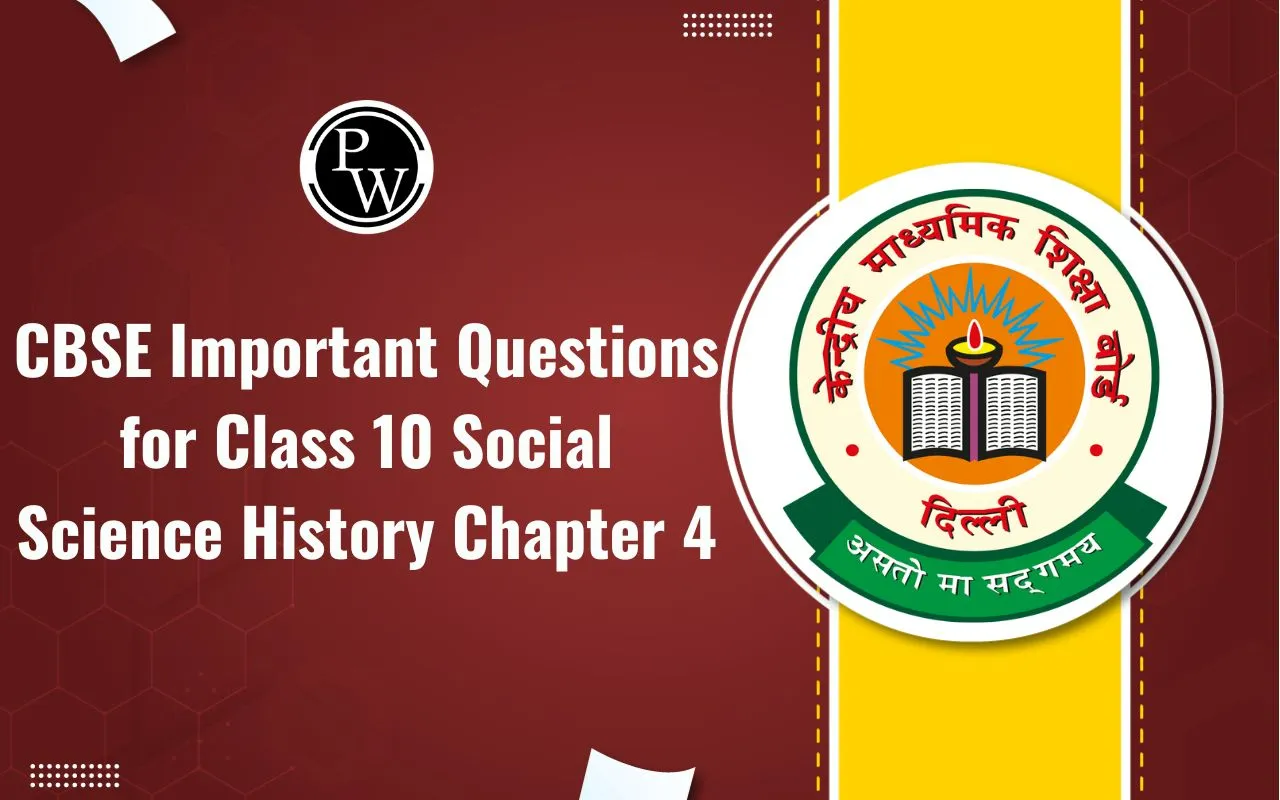
NCERT Solutions for Class 10 Maths Chapter 13 Exercise 13.1: The NCERT Solutions for Class 10 Maths Chapter 13 - Statistics (Exercise 13.1) provide comprehensive answers to problems related to data handling and representation. This exercise focuses on calculating measures of central tendency, including mean, median, and mode, for grouped and ungrouped data.
The solutions explain concepts clearly with step-by-step methods, enhancing understanding and problem-solving skills. These solutions help students interpret and analyze data effectively, a crucial skill in various real-life applications. They align with the NCERT syllabus, making them ideal for exam preparation, ensuring accuracy, and helping students score well by building a strong foundation in statistics.NCERT Solutions for Class 10 Maths Chapter 13 Exercise 13.1 Overview
The NCERT Solutions for Class 10 Maths Chapter 13 - Statistics (Exercise 13.1) are essential for understanding and applying statistical concepts effectively. This exercise introduces measures of central tendency, including mean, median, and mode, enabling students to analyze and interpret data systematically. The solutions provide clear, step-by-step explanations, making it easier to solve problems and strengthen foundational knowledge. These solutions are crucial for exam preparation as they align with the NCERT syllabus and address all key concepts. By mastering these techniques, students develop analytical skills applicable in academics and real-world situations, ensuring a strong base in data interpretation and mathematics.NCERT Solutions for Class 10 Maths Chapter 13 Exercise 13.1 PDF Download
NCERT Solutions for Class 10 Maths Chapter 13 Exercise 13.1 Statistics
1. A survey was conducted by a group of students as a part of their environment awareness program, in which they collected the following data regarding the number of plants in 20 houses in a locality. Find the mean number of plants per house.
| Number of Plants | 0-2 | 2-4 | 4-6 | 6-8 | 8-10 | 10-12 | 12-14 |
| Number of Houses | 1 | 2 | 1 | 5 | 6 | 2 | 3 |
Which method did you use for finding the mean, and why?
Solution:
To find the mean value, we will use the direct method because the numerical value of f i and x i are small. Find the midpoint of the given interval using the formula. Midpoint (x i ) = (upper limit + lower limit)/2|
No. of plants
(Class interval) |
No. of houses
Frequency (f i ) |
Mid-point (x i ) | f i x i |
| 0-2 | 1 | 1 | 1 |
| 2-4 | 2 | 3 | 6 |
| 4-6 | 1 | 5 | 5 |
| 6-8 | 5 | 7 | 35 |
| 8-10 | 6 | 9 | 54 |
| 10-12 | 2 | 11 | 22 |
| 12-14 | 3 | 13 | 39 |
| Sum f i = 20 | Sum f i x i = 162 |
2. Consider the following distribution of daily wages of 50 workers of a factory.
| Daily wages (in Rs.) | 500-520 | 520-540 | 540-560 | 560-580 | 580-600 |
| Number of workers | 12 | 14 | 8 | 6 | 10 |
Find the mean daily wages of the workers of the factory by using an appropriate method .
Solution: Find the midpoint of the given interval using the formula. Midpoint (x i ) = (upper limit + lower limit)/2 In this case, the value of mid-point (x i ) is very large, so let us assume the mean value, a = 550. Class interval (h) = 20 So, u i = (x i – a)/h u i = (x i – 550)/20 Substitute and find the values as follows:|
Daily wages
(Class interval) |
Number of workers
frequency (f i ) |
Mid-point (x i ) | u i = (x i – 550)/20 | f i u i |
| 500-520 | 12 | 510 | -2 | -24 |
| 520-540 | 14 | 530 | -1 | -14 |
| 540-560 | 8 | 550 = a | 0 | 0 |
| 560-580 | 6 | 570 | 1 | 6 |
| 580-600 | 10 | 590 | 2 | 20 |
| Total | Sum f i = 50 | Sum f i u i = -12 |
3. The following distribution shows the daily pocket allowance of children of a locality. The mean pocket allowance is Rs 18. Find the missing frequency f.
| Daily Pocket Allowance(in c) | 11-13 | 13-15 | 15-17 | 17-19 | 19-21 | 21-23 | 23-35 |
| Number of children | 7 | 6 | 9 | 13 | f | 5 | 4 |
| Class interval | Number of children (f i ) | Mid-point (x i ) | f i x i |
| 11-13 | 7 | 12 | 84 |
| 13-15 | 6 | 14 | 84 |
| 15-17 | 9 | 16 | 144 |
| 17-19 | 13 | 18 | 234 |
| 19-21 | f | 20 | 20f |
| 21-23 | 5 | 22 | 110 |
| 23-25 | 4 | 24 | 96 |
| Total | f i = 44+f | Sum f i x i = 752+20f |
4. Thirty women were examined in a hospital by a doctor, and the number of heartbeats per minute were recorded and summarised as follows. Find the mean heartbeats per minute for these women, choosing a suitable method.
| Number of heart beats per minute | 65-68 | 68-71 | 71-74 | 74-77 | 77-80 | 80-83 | 83-86 |
| Number of women | 2 | 4 | 3 | 8 | 7 | 4 | 2 |
| Class Interval | Number of women (f i ) | Mid-point (x i ) | u i = (x i – 75.5)/h | f i u i |
| 65-68 | 2 | 66.5 | -3 | -6 |
| 68-71 | 4 | 69.5 | -2 | -8 |
| 71-74 | 3 | 72.5 | -1 | -3 |
| 74-77 | 8 | 75.5 = a | 0 | 0 |
| 77-80 | 7 | 78.5 | 1 | 7 |
| 80-83 | 4 | 81.5 | 2 | 8 |
| 83-86 | 2 | 84.5 | 3 | 6 |
| Sum f i = 30 | Sum f i u i = 4 |
5. In a retail market, fruit vendors were selling mangoes kept in packing boxes. These boxes contained varying number of mangoes. The following was the distribution of mangoes according to the number of boxes.
| Number of mangoes | 50-52 | 53-55 | 56-58 | 59-61 | 62-64 |
| Number of boxes | 15 | 110 | 135 | 115 | 25 |
Find the mean number of mangoes kept in a packing box. Which method of finding the mean did you choose?
Solution: The given data is not continuous, so we add 0.5 to the upper limit and subtract 0.5 from the lower limit as the gap between two intervals is 1. Here, assumed mean (a) = 57 Class size (h) = 3 Here, the step deviation is used because the frequency values are big.| Class Interval | Number of boxes (f i ) | Mid-point (x i ) | u i = (x i – 57)/h | f i u i |
| 49.5-52.5 | 15 | 51 | -2 | -30 |
| 52.5-55.5 | 110 | 54 | -1 | -110 |
| 55.5-58.5 | 135 | 57 = a | 0 | 0 |
| 58.5-61.5 | 115 | 60 | 1 | 115 |
| 61.5-64.5 | 25 | 63 | 2 | 50 |
| Sum f i = 400 | Sum f i u i = 25 |
6. The table below shows the daily expenditure on food of 25 households in a locality.
| Daily expenditure(in c) | 100-150 | 150-200 | 200-250 | 250-300 | 300-350 |
| Number of households | 4 | 5 | 12 | 2 | 2 |
Find the mean daily expenditure on food by a suitable method.
Solution: Find the midpoint of the given interval using the formula. Midpoint (x i ) = (upper limit + lower limit)/2 Let us assume the mean (a) = 225 Class size (h) = 50| Class Interval | Number of households (f i ) | Mid-point (x i ) | d i = x i – A | u i = d i /50 | f i u i |
| 100-150 | 4 | 125 | -100 | -2 | -8 |
| 150-200 | 5 | 175 | -50 | -1 | -5 |
| 200-250 | 12 | 225 = a | 0 | 0 | 0 |
| 250-300 | 2 | 275 | 50 | 1 | 2 |
| 300-350 | 2 | 325 | 100 | 2 | 4 |
| Sum f i = 25 | Sum f i u i = -7 |
7. To find out the concentration of SO 2 in the air (in parts per million, i.e., ppm), the data was collected for 30 localities in a certain city and is presented below:
| Concentration of SO 2 ( in ppm) | Frequency |
| 0.00 – 0.04 | 4 |
| 0.04 – 0.08 | 9 |
| 0.08 – 0.12 | 9 |
| 0.12 – 0.16 | 2 |
| 0.16 – 0.20 | 4 |
| 0.20 – 0.24 | 2 |
Find the mean concentration of SO 2 in the air.
Solution: To find out the mean, first find the midpoint of the given frequencies as follows:| Concentration of SO 2 (in ppm) | Frequency (f i ) | Mid-point (x i ) | f i x i |
| 0.00-0.04 | 4 | 0.02 | 0.08 |
| 0.04-0.08 | 9 | 0.06 | 0.54 |
| 0.08-0.12 | 9 | 0.10 | 0.90 |
| 0.12-0.16 | 2 | 0.14 | 0.28 |
| 0.16-0.20 | 4 | 0.18 | 0.72 |
| 0.20-0.24 | 2 | 0.22 | 0.44 |
| Total | Sum f i = 30 | Sum (f i x i ) = 2.96 |
8. A class teacher has the following absentee record of 40 students of a class for the whole term. Find the mean number of days a student was absent.
| Number of days | 0-6 | 6-10 | 10-14 | 14-20 | 20-28 | 28-38 | 38-40 |
| Number of students | 11 | 10 | 7 | 4 | 4 | 3 | 1 |
| Class interval | Frequency (f i ) | Mid-point (x i ) | f i x i |
| 0-6 | 11 | 3 | 33 |
| 6-10 | 10 | 8 | 80 |
| 10-14 | 7 | 12 | 84 |
| 14-20 | 4 | 17 | 68 |
| 20-28 | 4 | 24 | 96 |
| 28-38 | 3 | 33 | 99 |
| 38-40 | 1 | 39 | 39 |
| Sum f i = 40 | Sum f i x i = 499 |
9. The following table gives the literacy rate (in percentage) of 35 cities. Find the mean
literacy rate.
| Literacy rate (in %) | 45-55 | 55-65 | 65-75 | 75-85 | 85-98 |
| Number of cities | 3 | 10 | 11 | 8 | 3 |
| Class Interval | Frequency (f i ) | (x i ) | u i = (x i – 70)/10 | f i u i |
| 45-55 | 3 | 50 | -2 | -6 |
| 55-65 | 10 | 60 | -1 | -10 |
| 65-75 | 11 | 70 = a | 0 | 0 |
| 75-85 | 8 | 80 | 1 | 8 |
| 85-95 | 3 | 90 | 2 | 6 |
| Sum f i = 35 | Sum f i u i = -2 |
Benefits of Using NCERT Solutions for Class 10 Maths Chapter 13 Exercise 13.1
Conceptual Clarity : Simplifies complex topics like mean, median, and mode with step-by-step explanations.
Exam Preparation : Aligned with the NCERT syllabus, ensuring comprehensive coverage of important questions.
Efficient Revision : Provides quick and accurate solutions, saving time during last-minute study.
Error-Free Solutions : Expertly designed answers guarantee accuracy and reliability.
Practical Application : Enhances data interpretation and analytical skills, useful in academics and real-life scenarios.
Boosts Confidence : Regular practice with these solutions improves understanding and performance in exams.
NCERT Solutions for Class 10 Maths Chapter 13 Exercise 13.1 FAQs
What are 5 applications of statistics?
What are the two main types of statistics?
What are the 5 main statistics?
What is good knowledge of statistics?










